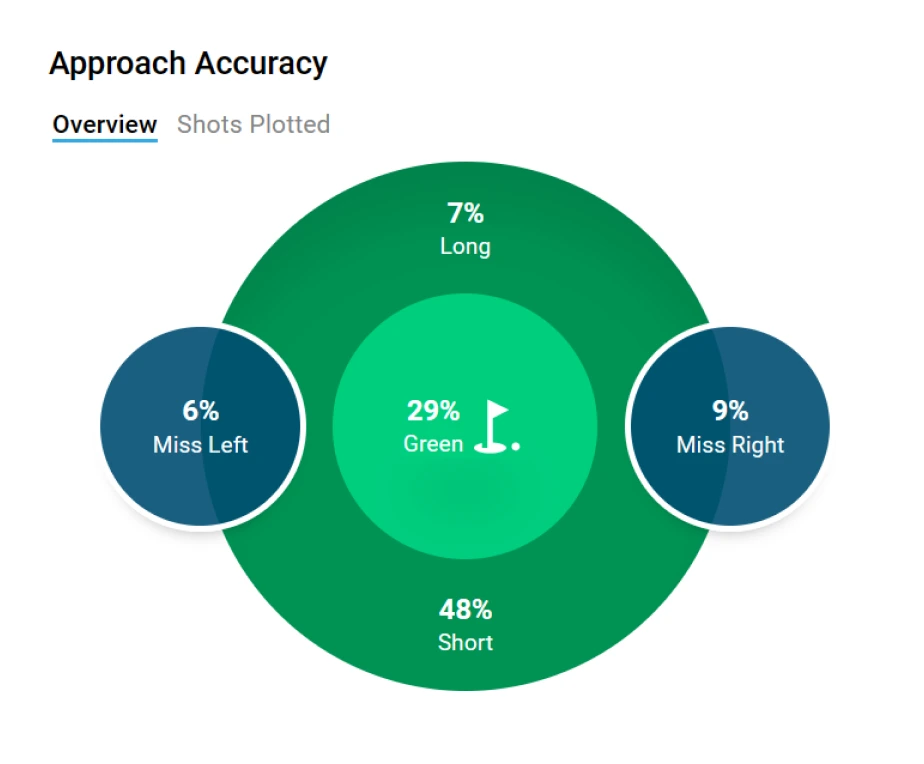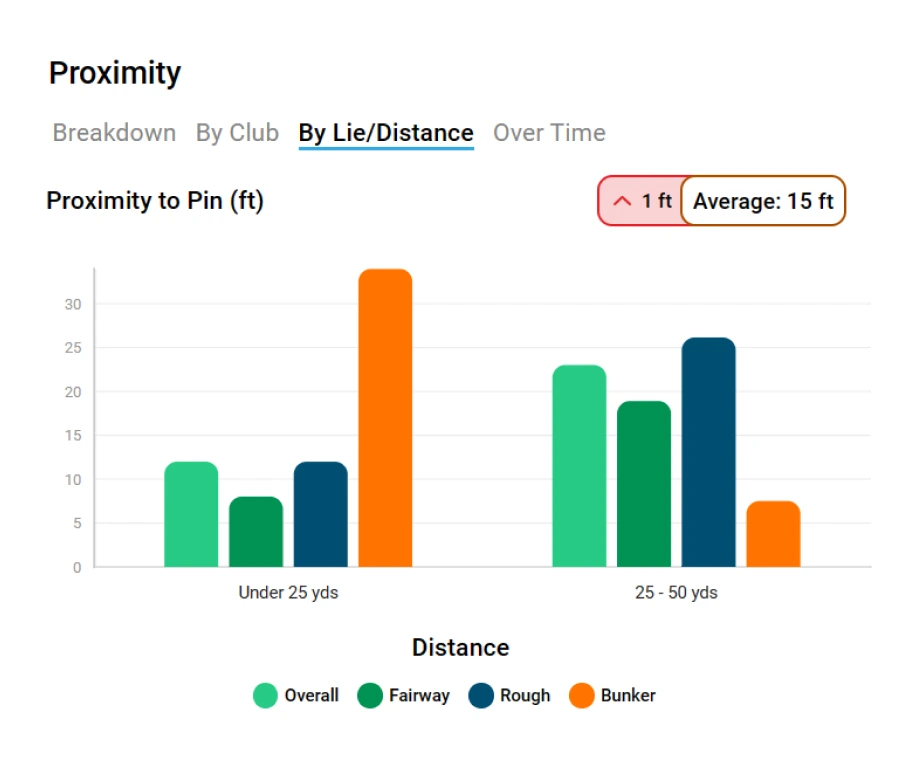9 HCP Case Study
With Peter Finch, in partnership with

Track your performance
Featured on cutting-edge devices like the Shot Scope X5/V5 watches, CONNEX mobile-enabled tracking tags, or the PRO LX+ laser rangefinder, Strokes Gained allows us to compare our performance with every section of the bag against our handicap and discover where we are better and worse than them.
Analyse your statistics
Dig deeper into the data to see what is actually happening – for example, your driving may be costing you the most shots per round, but is that down to distance or accuracy? If accuracy, what is the miss pattern?
Get help from a coach
Enlist professional help to work out what is causing the problem, and put a plan in place to deal with it.
3 Simple steps to
improving fast
Shot Scope and Peter Finch, in partnership with Today’s Golfer, present three simple steps to help you improve your golf game fast, with the help of performance tracking products such as the V5 GPS golf watch. The case study below details how Peter Finch used these three steps to help a 9 handicap golfer, Nick Furness improve his golf game.
9 HCP Golfer Case Study
Peter's take on Nick's
Shot Scope data
Nick’s second area of concern is his greenside bunker play, which is ruining some otherwise very tidy short game stats. In fact its the only area he is losing shots against his handicap level.
Nick’s second area of concern is his greenside bunker play, which is ruining some otherwise very tidy short game stats. In fact its the only area he is losing shots against his handicap level.



Focus area 1: Irons
Amateur golfers often hit short because they pick the club for their best shot, not their average shot. However, this is not Nick’s issue, as he has a very good idea of how far he hits his irons. After analysing Nick on the course, Peter identified a technical issue. Nick has an overly square lead foot, stopping him getting through the shot.
Short-term solution:
Adjust targeting
In the immediate future Nick could simply pull his target to the back left quadrant of the green, irrespective of where the pin is. This would drag his dispersion forward and left, meaning more shots would find the putting surface.
Long-term solution:
Fan lead foot
Nick’s issue is actually a simple one. He sets up with his lead foot very square and almost turned slightly inward – a throwback to perhaps his other passion of cricket. In itself its no disaster, but this foot orientation sets up the lead knee and hip in a very square and locked up position that resists core rotation. As a result Nick hits a roadblock on his way back down to the ball; unable to rotate through, his core stalls, leaving his hands and arms to click at the ball.
This is what is costing him power, with the blocked-nature of his impact causing him to hit equally blocked shots to the right. I asked Nick to fan his lead foot aggressively, pivoting around the heel location, and encouraged him to feel his chest faced the target at finish.
Instantly his shots showed a very different direction, starting a good 10 yards left of that old blocked strike. Now able to recruit rotational power, he also
gained distance.
Focus area 2: Bunkers
Peter asked Nick to hit 5 bunker shots. Two were clean, two were heavy, and one was just okay. Even this small sample size fitted a Shot Scope data pattern that showed weak proximity for a single-handicap golfer.
Short-term solution:
Take more sand
Until Nick improves his technique, he could make a commitment to moving away from looking for the perfect sand strike – an inch or two behind the ball – and taking more sand on every shot. A rather agricultural solution it may be, but it would at least give his greenside sand shots a little more predictability and rein in his dispersion.
Long-term solution:
Shallow the attack
Once again, the Shot Scope data flags up a technical issue. Nick stands quite tall in the sand, addresses the ball with a square face and has a relatively steep attack angle. This dramatically narrows his window for an effective strike; he risks coming too close to the ball – causing the clean one – while he also introduces the sharp edge of his sand wedge to the sand which can cause the clubhead to dig and stall… the heavy one.
I asked him to open the clubface to exaggerate the bounce on the sole of the club, and then lower the handle to bring the face back closer to square. From here, I encouraged him to swing the club more around his body, a flatter plane of motion that promotes a shallower attack. The final step was to whip the clubhead briskly through the sand. This will certainly take some practice, but if Nick perseveres he will massively increase his margin for error with the strike… and that will give him the consistency he currently lacks.
Track your shots
to record improvement
The final tip from Peter, is to persevere with the adjustments made in the lesson, and monitor how the changes effect performance. The best way to monitor performance on the golf course is by tracking your game with Shot Scope.
The final tip from Peter, is to persevere with the adjustments made in the lesson, and monitor how the changes effect performance. The best way to monitor performance on the golf course is by tracking your game with Shot Scope.
